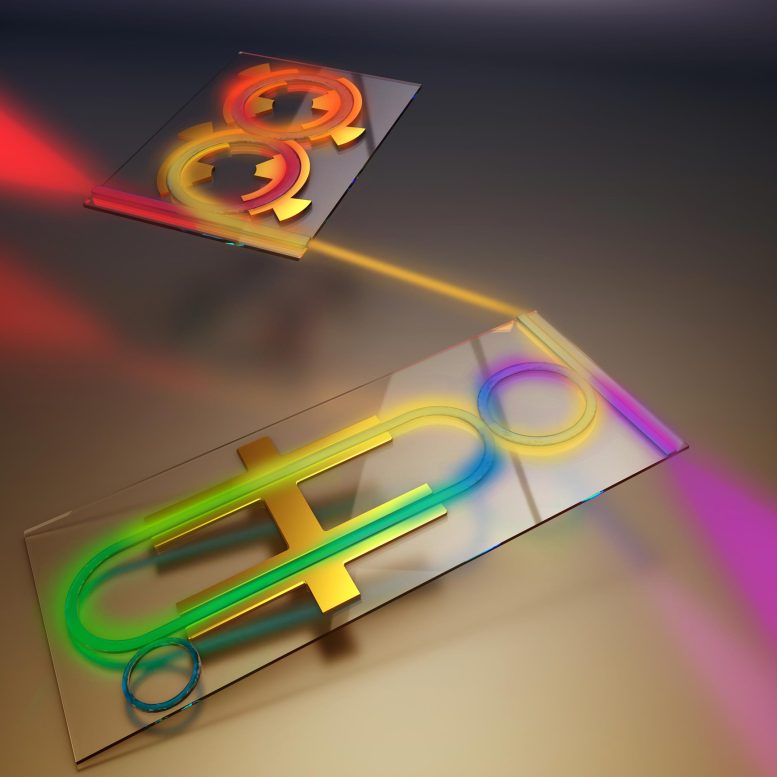
In the top device, two coupled resonators form a figure eight-like structure. Input light travels from the waveguide through the resonators, entering as one color and emerging as another. The bottom device uses three coupled resonators: a small ring resonator, a long oval resonator called a racetrack resonator, and a rectangular-shaped resonator. As light speeds around the racetrack resonator, it cascades into higher and higher frequencies, resulting in a shift as high as 120 gigahertz. Credit: Second Bay Studios/Harvard SEAS
On-chip frequency shifters in the gigahertz range could be used in next generation quantum computers and networks.
The ability to precisely control and change properties of a photon, including polarization, position in space, and arrival time, gave rise to a wide range of communication technologies we use today, including the Internet. The next generation of photonic technologies, such as photonic quantum networks and computers, will require even more control over the properties of a photon.
One of the hardest properties to change is a photon’s color, otherwise known as its frequency, because changing the frequency of a photon means changing its energy.
Today, most frequency shifters are either too inefficient, losing a lot of light in the conversion process, or they can’t convert light in the gigahertz range, which is where the most important frequencies for communications, computing, and other applications are found.
Now, researchers from the Harvard John A. Paulson School of Engineering and Applied Sciences (SEAS) have developed highly efficient, on-chip frequency shifters that can convert light in the gigahertz frequency range. The frequency shifters are easily controlled, using continuous and single-tone microwaves.
The research is published in Nature.
“Our frequency shifters could become a fundamental building block for high-speed, large-scale classical communication systems as well as emerging photonic quantum computers,” said Marko Lončar, the Tiantsai Lin Professor of Electrical Engineering and senior author of the paper.
The paper outlines two types of on-chip frequency shifter — one that can covert one color to another, using a shift of a few dozen gigahertz, and another that can cascade multiple shifts, a shift of more than 100 gigahertz.
Each device is built on the lithium niobate platform pioneered by Lončar and his lab.
Lithium niobate can efficiently convert electronic signals into optical signal but was long considered by many in the field to be difficult to work with on small scales. In previous research, Lončar and his team demonstrated a technique to fabricate high-performance lithium niobate microstructures using standard